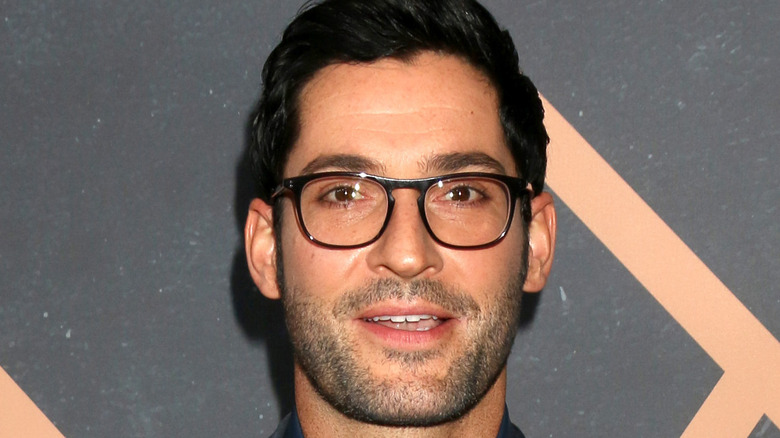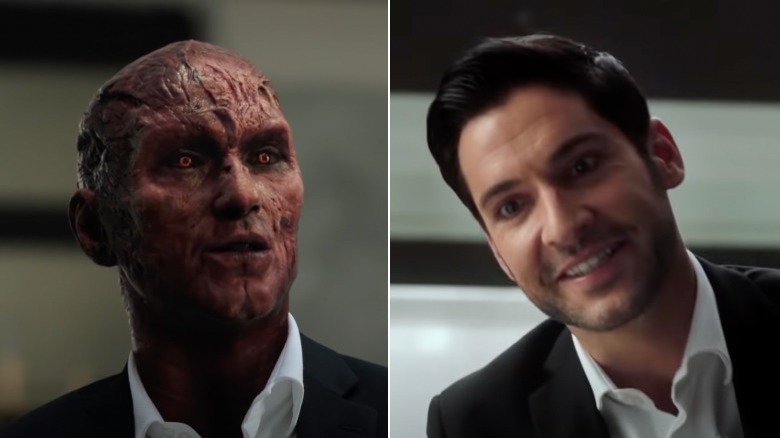How Fans Really Feel About The CGI In Lucifer
Like the lead character himself, the television series "Lucifer" has had quite a life . . . and afterlife. The show, which follows Tom Ellis' sexy, charming Devil as he abandons his job as keeper of the underworld to study human life in the City of Angels, has been canceled not once, but twice.
After debuting on Fox in January 2016 to mediocre critic reviews — Rotten Tomatoes gave it a sad 49% on the Tomatometer — audiences were much more positive, and Fox renewed it, extended the second season, and picked up Season 3 within nine months, according to The Wrap. But as ratings dropped, Fox canceled the show before the Season 3 finale aired. Lucifer fans refused that fate and took up the gauntlet with their #SaveLucifer campaign, and it only took a month, per Vulture, for Netflix to save the show from ruin, granting it two additional seasons and declaring its official end with a 10-episode Season 5. That still wasn't enough for fans, and Netflix eventually approved an extended, 16-episode Season 5, and a this-is-really-it, final season 6 of Lucifer to tie up loose ends. The series finale finally aired on September 10, 2021.
The show, inspired by a character from Neil Gaiman's "The Sandman" — also being adapted for Netflix — is still popular with viewers, and fans frequently talk about the series online . . . though not always with the kindest comments. A June 2022 thread on Reddit has folks questioning an important part of current television making, especially when it comes to supernatural stories: the CGI.
Fans are a little disappointed with Lucifer's face
A "Lucifer" fan asked the important question on Reddit, "Am I the only one who thinks the CGI looks fake?" While rewatching the series, they found the CGI "just looks...well, bad." There was agreement among the comments. "Most of the time Lucifer's devil face looks like he was just hit with a plate full of lasagna," someone replied. Others said that the effects get better as the seasons go on, and Tom Ellis seemed to verify that. "It's incredible how much technology has evolved in that department," Ellis told Vulture. "It used to be a laborious process with me and a green screen. Now I don't have to do any of that; it takes barely a few minutes."
But the ease technology provides is part of why CGI can look bad — and why the VFX industry remains in serious trouble. As one Redditor explained, "it isn't usually from a lack of talent in the CGI artist department, but more so time crunches due to episodes needing to be released on a schedule. A very wise CGI artist once told me, 'anybody can make amazing VFX, if they have all the time in the world.'"
Advancements in technology make the work look easy — as all artists are supposed to do — and a lack of understanding of the complexities of CGI, coupled with a blasé "we'll fix it in post" attitude from producers contribute to the problem. "It's that cliche: Fast, cheap, and good. Pick two," director Kerry Conran succinctly told Inverse. "Productions expect you to deliver on all three, but that doesn't exist."

